Cost Comparison for VRF (HVAC) Heat Pumps and packaged Vertical Units
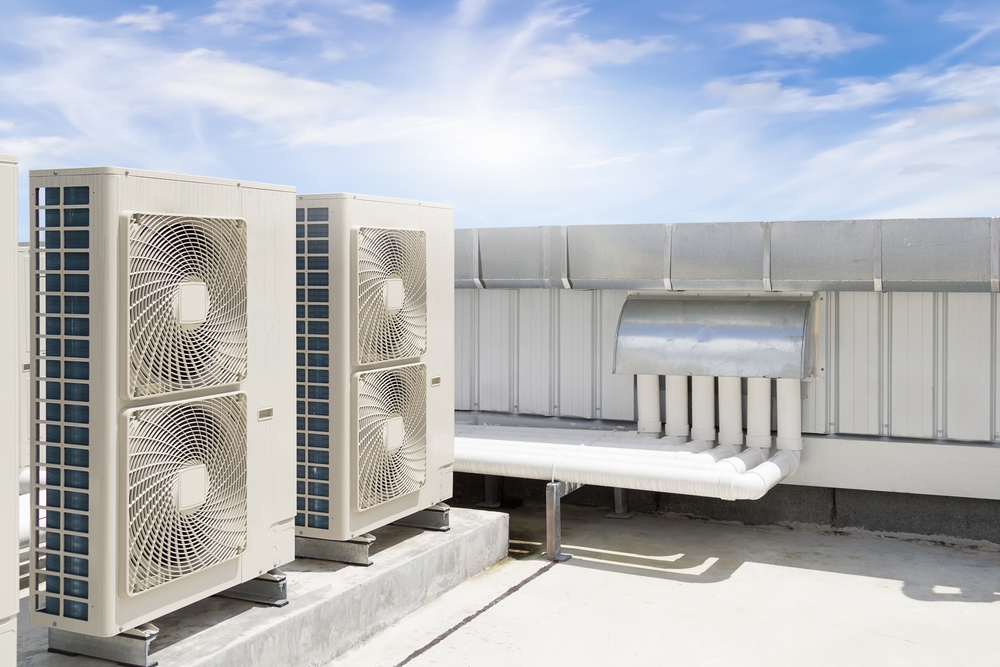
HVAC installations are characterized by the wide range of system configurations available, and design decisions have a significant impact on the final cost of the project. This case study provides a detailed cost comparison for the three following options:
1. VRF HVAC system (LG) with a balcony heat pump, and indoor fan coils for two zones.
2. VRF HVAC system (LG) with a rooftop heat pump, and indoor fan coils for two zones.
3. Packaged vertical unit (Magic-Pak) on a balcony, with electrical air conditioning and gas heating.
The three system configurations described above were analyzed for three apartment layouts, which resulted in nine scenarios. Thus, we tried to factor in various options suitable both for well-to-do families and people on a budget.
Let’s say you’re a student who needs to save extra money to pay for essay services or other college-related expenses. With our guide, you can find the right system for your apartment.
The apartments considered have the following characteristics:
- One bedroom, 1,271 sq. ft.
- Two bedrooms, 1,426 sq. ft.
- Three bedrooms, 1,838 sq. ft.
The rooftop VRF system is the most expensive option for the three apartment layouts, followed by the balcony VRF system. The lowest installation cost is achieved with packaged vertical units from the Magic-Pak M Series.
Get a professional HVAC design that meets the needs of your apartment building.
Cost Summary of the Three HVAC Options
The following table provides the mechanical, electrical and plumbing costs of each scenario in the case study. It is important to note that the table uses actual quotes from NYC contractors.
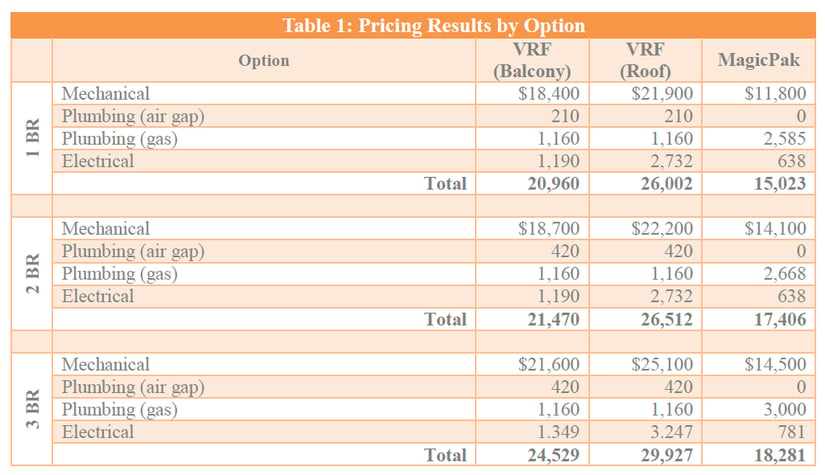
The packaged vertical units lead to more affordable HVAC installations for several reasons:
- The VRF options use heat pumps and fan coils connected with long refrigerant lines, while the Magic-Pak unit consolidates equipment and eliminates refrigerant connections.
- The Magic-Pak unit requires no condensate drain connections, since it uses a floor drain on the balcony.
- The VRF systems require separate electrical circuits for heat pumps and fan coils, while the Magic-Pak unit only uses one circuit. The rooftop VRF system has the highest electrical cost, due to the length of the circuit powering the heat pumps.
- Since the Magic-Pak unit uses gas heating, it comes with higher gas piping costs compared with the VRF options. However, these extra costs are offset by the savings in all other MEP installations.
- Gas piping only serves a stove when the VRF options are used, hence its lower cost.
The following sections provide an individual cost comparison for the mechanical, electrical and plumbing installations in each of the scenarios considered.
Mechanical Installation: Overview and Cost
The following drawings show the mechanical equipment locations for the VRF system with heat pumps on the apartment balconies. The outdoor heat pumps are labeled ACCU (air-cooled condenser unit), while the indoor fan coils are labeled AC.
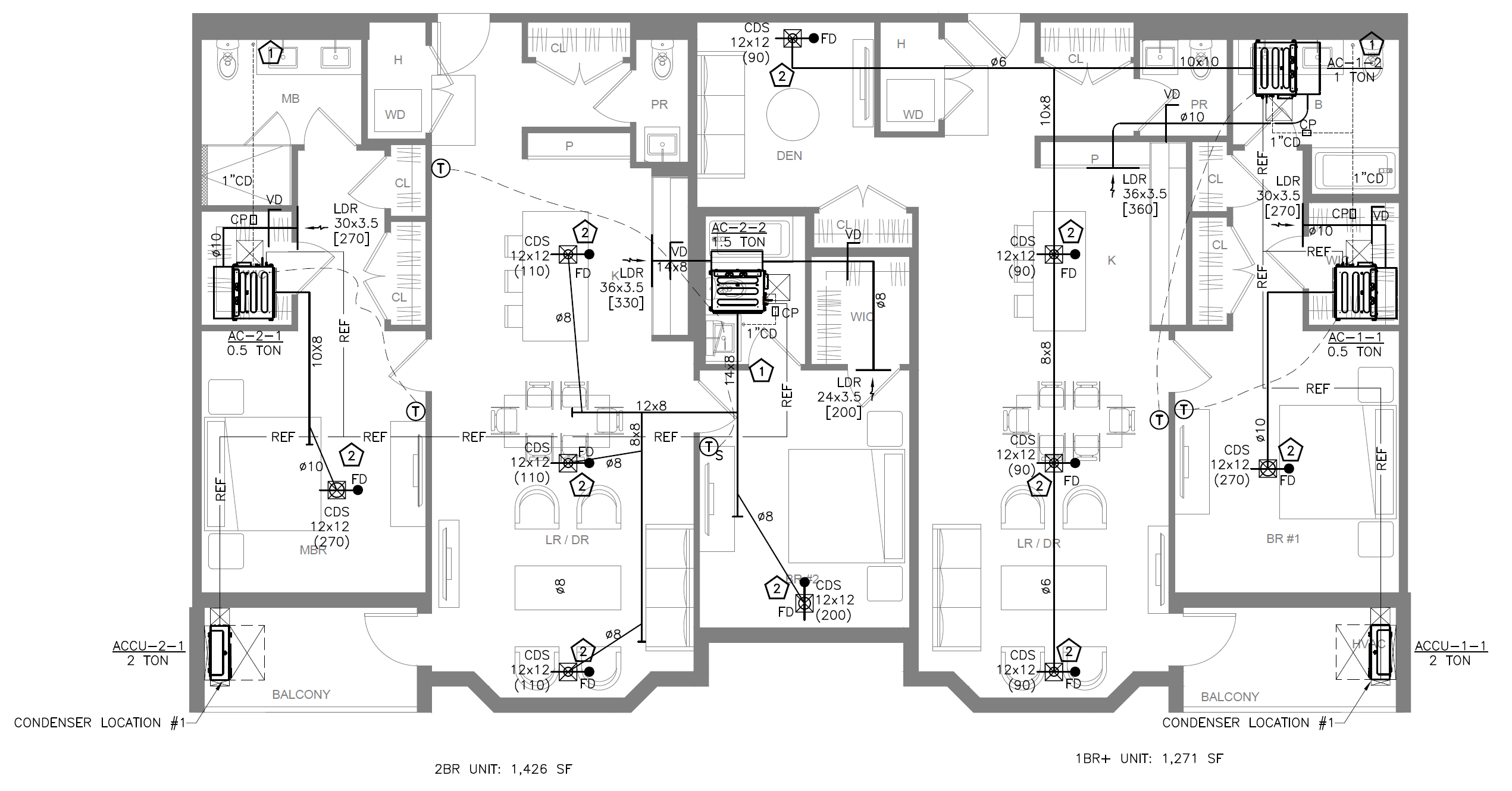
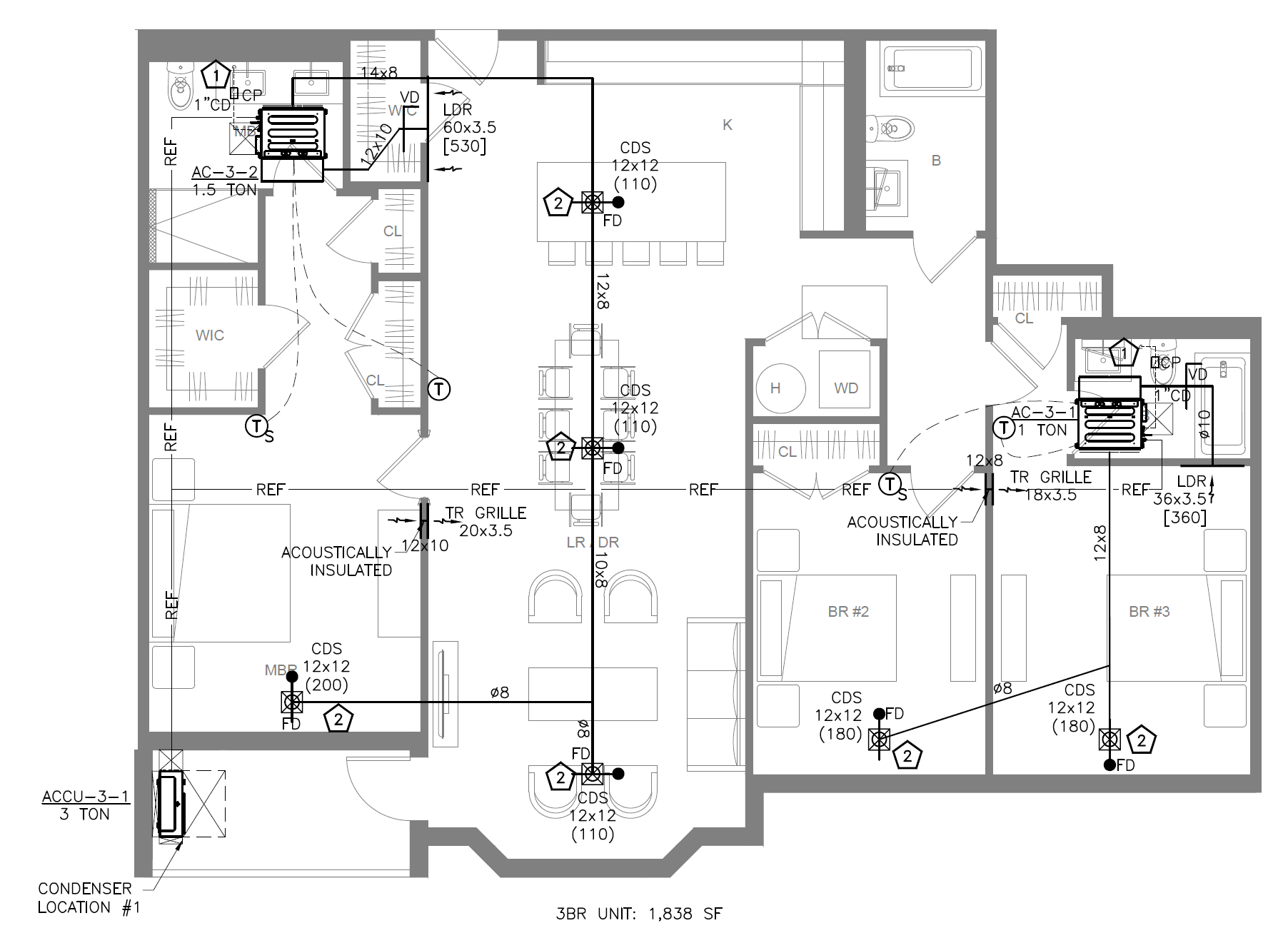
In all three apartment layouts, the VRF system uses an outdoor heat pump and two indoor fan coils. Indoor equipment locations are the same in the rooftop VRF option, but the system becomes more expensive because refrigerant lines and electrical circuits are longer.
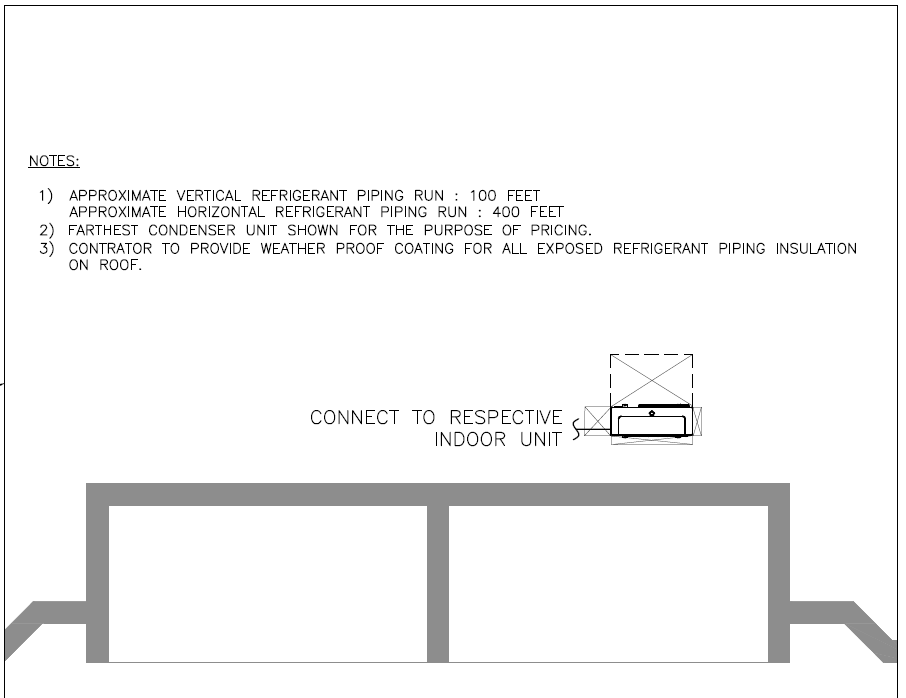
The Magic-Pak units result in a simpler mechanical layout, as shown in the following drawings. The system uses a single packaged unit instead of separate condensers and fan-coils, and there is no need to install refrigerant lines:
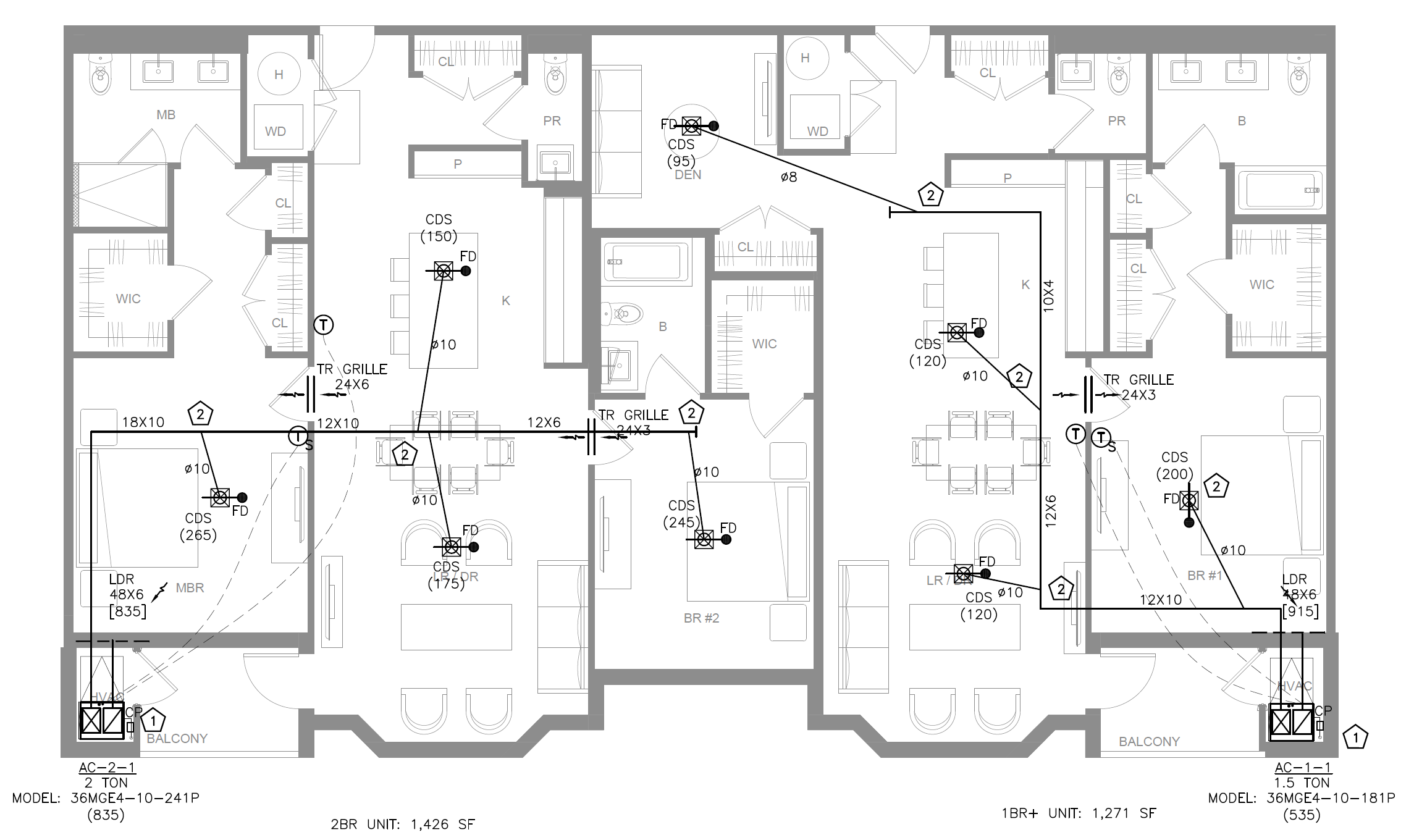
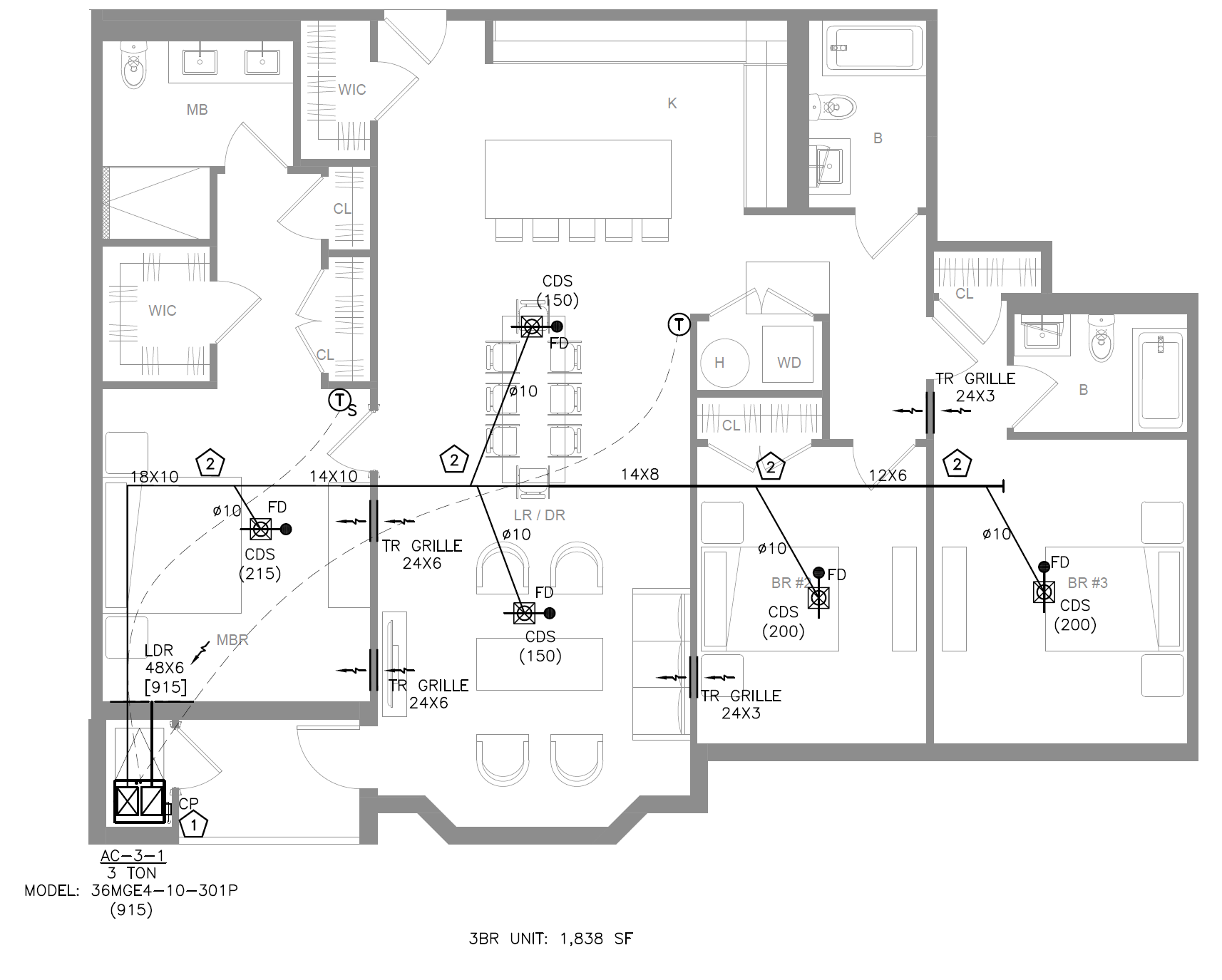
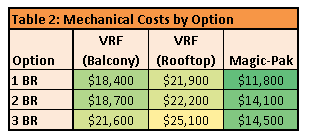
Since the Magic-Pak installation uses less equipment and is more compact, it has the lowest cost among all three options. Consider that a compact installation achieves not only equipment and material savings, but also skilled labor savings.
Electrical Installation: Overview and Cost
Although the mechanical installation represents most of the project scope and cost, there are also significant differences between the electrical installations in each option. The Magic-Pak system also has the lowest electrical costs, requiring only one circuit, while the VRF options require three circuits.
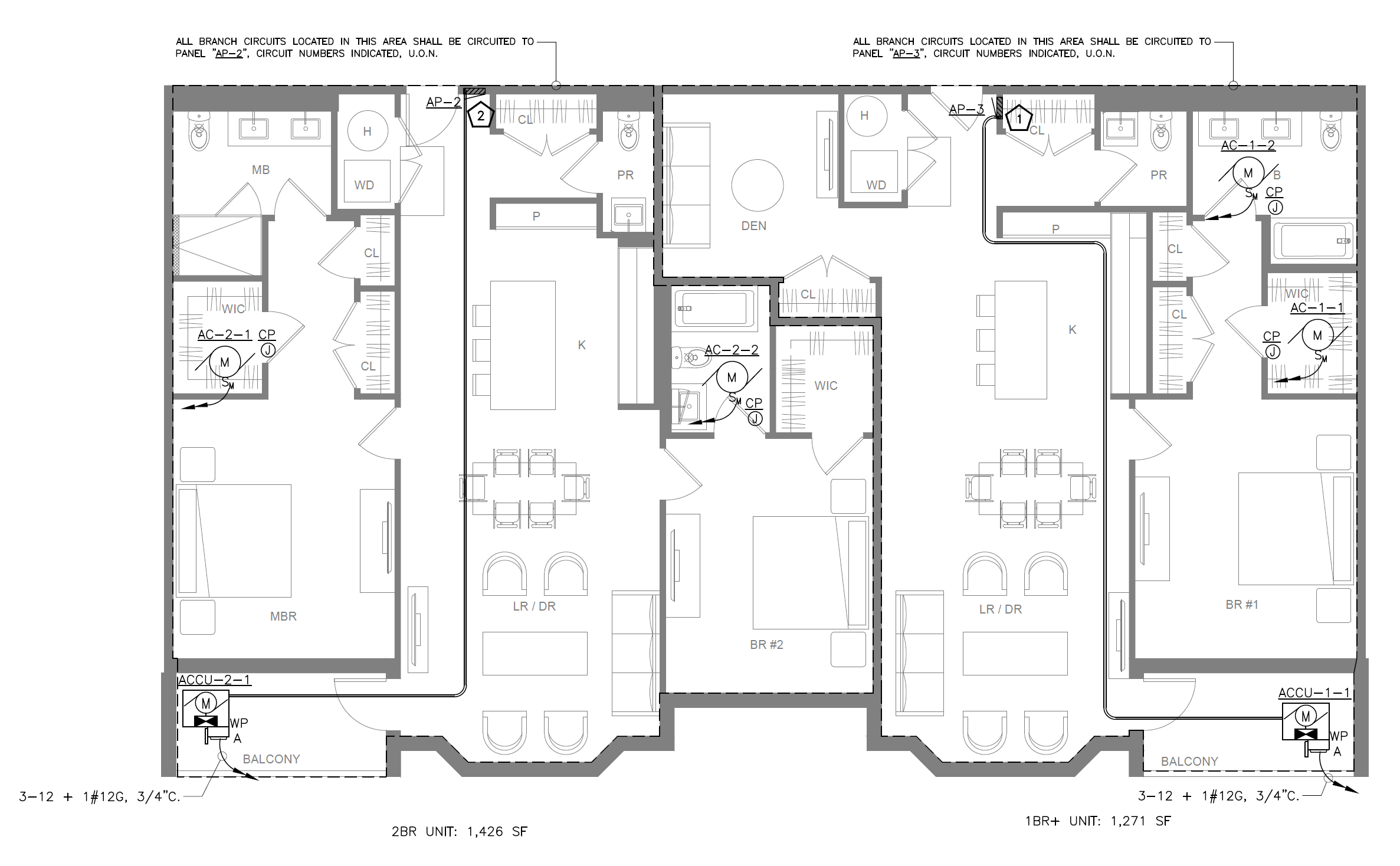
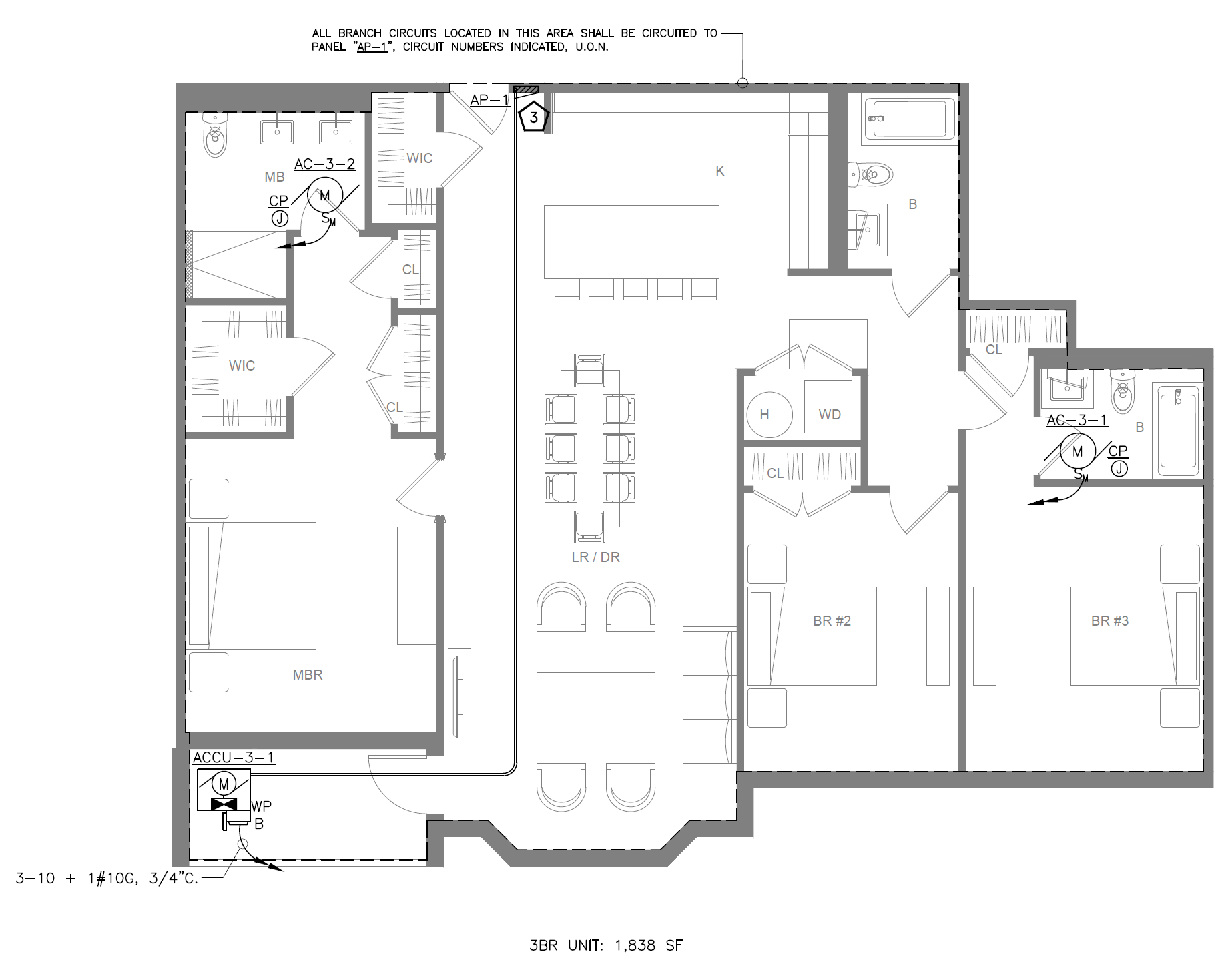
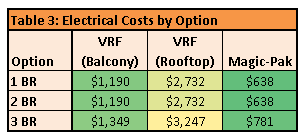
The heat pump circuits become even longer with the rooftop VRF system since they must reach the location indicated in Figure 03. Although the conduit and wiring sizes do not change, the electrical installation becomes more expensive due to the extra distance traveled.
When Magic-Pak units are used, there is no need to install separate circuits for fan-coil units. The installation uses a single circuit between the apartment load center and the packaged HVAC unit in the balcony. Electrical costs for all nine scenarios are compared in the following table.
Plumbing & Gas Installation: Overview and Cost
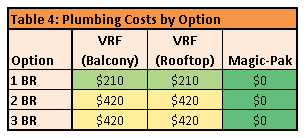
The Magic-Pak option eliminates the condensate drain connections between fan coils and sinks, reducing plumbing costs. Since the packaged units are installed on the balcony, they use a simple floor drain.
Gas piping is the only part of the project that becomes more expensive, since the Magic-Pak unit specified uses gas burners for space heating. On the other hand, the VRF heat pumps run only with electricity in both modes of operation, and the stove is the only piece of equipment that consumes natural gas.
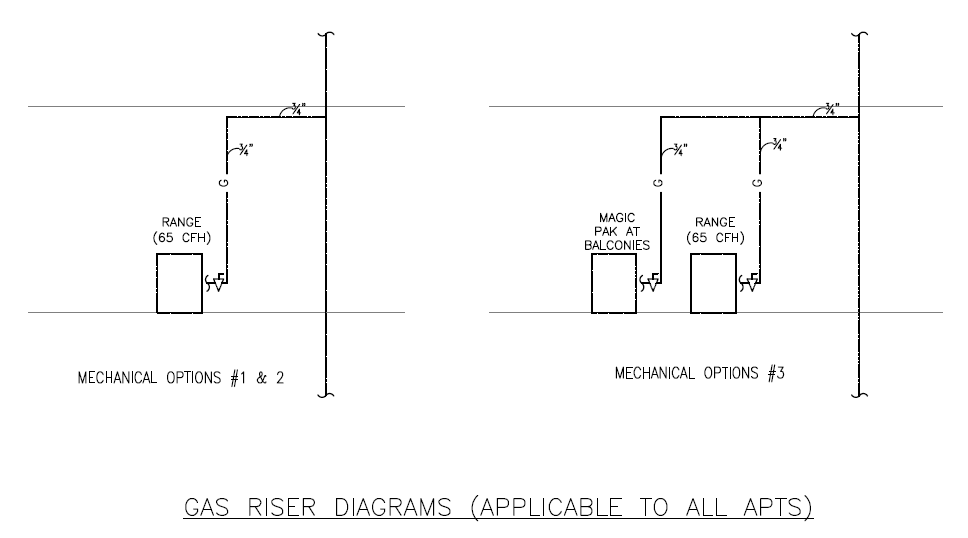
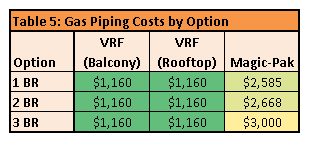
As indicated in the following table, gas piping is the only element that becomes more expensive with packaged vertical units. However, the savings in all other system components are much higher than the additional gas piping cost:
Final Cost Comparison
Vertical packaged units are the most economical HVAC option for all three apartment layouts, as indicated in the following chart:
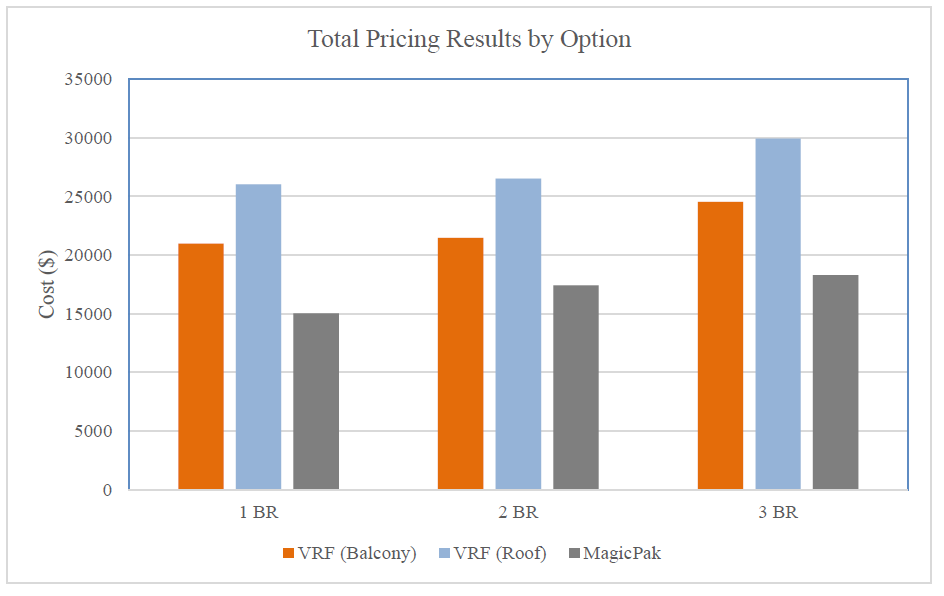
In this case study, most MEP installations have a lower cost when packaged vertical units are used. This happens because mechanical equipment is consolidated, using only one electrical circuit and one-floor drain per apartment. The only part of the project that becomes more expensive is gas piping; Magic-Pak units use gas heating, while VRF heat pumps use electricity for both heating and cooling.
A professional HVAC design is the first step to getting reliable cost information for a project. Once a detailed design is available, contractors can provide accurate quotes for the HVAC project. Cost estimates based on rules of thumb are not recommended: they lead to oversized equipment that is more expensive than necessary, and system components are easily missed without an adequate design procedure.

Anuj Srivastava
Anuj Srivastava is a principal partner at NY Engineers. He is known for his MEP franchise market knowledge. Anuj is currently leading a team of 100+ MEP/FP engineers and has successfully led over 1500 franchise projects in the US.
Join 15,000+ Fellow Architects and Contractors
Get expert engineering tips straight to your inbox. Subscribe to the NY Engineers Blog below.



